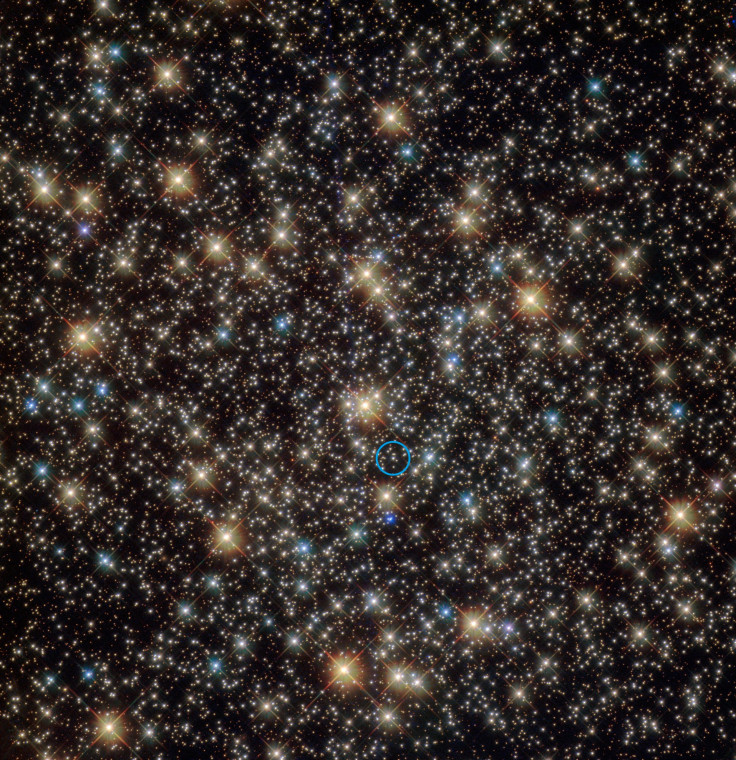Black Hole In Massive Star Cluster Revealed By Orbiting Star’s Weird Motion
For the first time, scientists have discovered a stellar-mass black hole in a globular star cluster by detecting its gravitational pull on another object. An inactive black hole was discovered in the star cluster NGC 3201 because of the erratic motion being displayed by a star that was orbiting it.
The observations were made using the European Southern Observatory’s Very Large Telescope in Chile. The MUSE instrument on VLT showed the odd behavior of a star — it was "being flung backwards and forwards at speeds of several hundred thousand kilometres per hour, with the pattern repeating every 167 days," according to a statement Wednesday by ESO.
The star itself was determined to be 80 percent of the sun’s mass, while the black hole that is throwing it into a tizzy was calculated to have a mass of about 4.3 suns. Given the absence of an accretion disk and no matter being swallowed, that the latter object is a black hole is not certain, but highly likely.
ESO researchers wrote a paper on their findings. Titled "A detached stellar-mass black hole candidate in the globular cluster NGC 3201," it is set to appear in the journal Monthly Notices of the Royal Astronomical Society.
"It was orbiting something that was completely invisible, which had a mass more than four times the Sun — this could only be a black hole! The first one found in a globular cluster by directly observing its gravitational pull," the study’s lead author Benjamin Giesers, from Georg-August-Universität Göttingen, Germany, said in the statement.
NGC 3201 is one of the many star clusters orbiting the Milky Way (about 150 of them are known), located about 16,300 light-years away from the sun. Star clusters are some of the oldest known structures of stars in the universe, and are home to hundreds of thousands of stars. This particular star cluster is over 10.2 billion years old.

Current theories of black hole formation would suggest that a number of stars would have exploded and collapsed over those billions of years, turning into black holes. Since star clusters don’t produce new stars continuously, such stellar-mass black holes in them would become the most massive objects. Over time, the black holes accumulate around the cluster’s nucleus, and the majority of them are eventually ejected.
"Until recently, it was assumed that almost all black holes would disappear from globular clusters after a short time and that systems like this should not even exist! But clearly this is not the case — our discovery is the first direct detection of the gravitational effects of a stellar-mass black hole in a globular cluster. This finding helps in understanding the formation of globular clusters and the evolution of black holes and binary systems — vital in the context of understanding gravitational wave sources," Giesers said.
If the invisible object is not a black hole, there are other explanations which are less likely. For instance, it could be "two tightly bound neutron stars, with the observed star orbiting around them." However, this would require both neutron stars to be at least twice the sun’s mass, making a binary system whose kind has never been observed before.
The research paper can be found on the ESO website.
© Copyright IBTimes 2024. All rights reserved.











